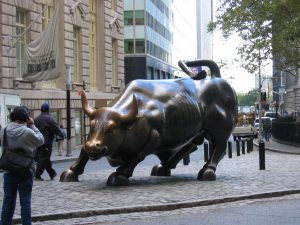 When will it end? Some research firms tells us “not yet”, others are sellers and allocating to markets perceived to have more value. Meanwhile, the DJIA continues to beat all expectations. We’ve heard it called the legislative trifecta trade, or the hope trade: regulation rollback, tax cuts, infrastructure. Until there’s clarity on one of those items, the indices will keep going higher.
When will it end? Some research firms tells us “not yet”, others are sellers and allocating to markets perceived to have more value. Meanwhile, the DJIA continues to beat all expectations. We’ve heard it called the legislative trifecta trade, or the hope trade: regulation rollback, tax cuts, infrastructure. Until there’s clarity on one of those items, the indices will keep going higher.
USAA global multi-asset fund manager Lance Humphrey warns that investors need to diversify rather than build on what they already have in the high flying U.S. equity markets.
“Some might think that diversification hasn’t really worked during the long recovery after the 2007 – 08 financial crisis,” he says. Investors who have followed the standard advice to put their eggs into many baskets — U.S. stocks, international stocks, government bonds, commodities and the like — have been generally whipsawed by the SPDR S&P 500 (SPY 515,71 +2,85 +0,56%). Over the last 10 years ending today, State Street’s Spider SPY ETF is up 62.2%. Their gold (GLD 211,52 -1,22 -0,57%) fund is up 75.7% and BlackRock’s iShares MSCI World (Unfortunately, we could not get stock quote XWD this time.) is up 114.5%. But if you go back to the lows in the S&P 500, the 666 intraday hit on March 6, 2009, then the SPY is the market leader. It’s up 241.9% since that date, with the closest competitor being the MSCI World, up by less than half that.
If performance leaders change pole position over time, tell that to S&P 500 buyers. The last time the S&P 500 trailed was pre-crisis, when it was underperforming China and Europe. No one knows in advance when the leader board will change, so it makes sense to try to protect wealth by diversifying across asset classes now, Humphrey says.
In other words, might this be a good time to take some money off the table and put it to work someplace else? Someplace cheap, with some upside?
“This may be a good time to look at rebalancing stock allocations. Economic conditions and corporate profitability in non-U.S. developed markets and emerging markets are starting to pick up,” the USAA fund manager says. “More importantly, they are surpassing the expectations priced into the respective markets. This creates momentum that can lift shares.”

